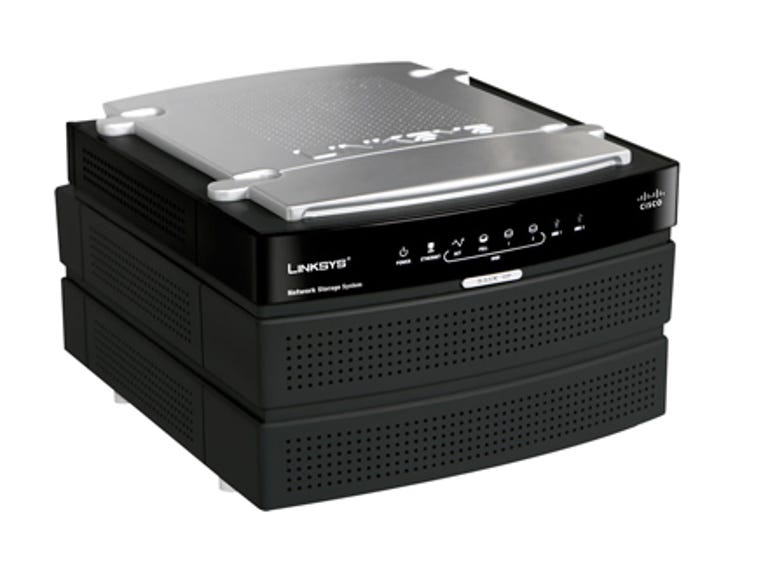 Why You Can Trust CNET
Why You Can Trust CNET Linksys NAS200 review: Linksys NAS200
Linksys's NAS200 is marred by slow performance, high noise and lack of flexibility compared to its D-Link competitor.
Personal NAS is so hot right now it burns. Linksys is the latest brand on the bandwagon with its dual drive NAS200 unit, offering much the same feature set as other NAS devices, yet with a few flaws that are hard to overlook.
The Good
The Bad
The Bottom Line
Design
Presented in the now typical perforated plastic Linksys design, the NAS200 is not unattractive, looking somewhat like a miniaturised squat stereo. It's quite light, which unfortunately imparts a sense of cheapness. This is confirmed when opening the drive bays at the rear and the drive releases are discovered to be tags, akin to those found on clothing with washing instructions, that are tugged on to remove the drive and tend to get in the way when trying to insert one.
Two USB ports are available above this for further external storage, and next to that the biggest downfall of the device -- a 100Mbit Ethernet connection. In an age where everything is going gigabit Ethernet, this stands out as a very poor choice on Linksys's behalf.
LEDs dot the front to tell of drive activity/status, power, Ethernet and USB status. A single button is on the front for instant backup through NTI's Shadow software, which is an easy to use program, including the option to save multiple versions of backed up files. There doesn't appear to be an option to do a differential backup.
Features
The NAS200 supports separate drives, JBOD, RAID 1 and RAID 0 configurations, which can be managed through a client side application or through a Web interface. The Web UI is unattractive and not particularly intuitive, and requires you to login every time you flip between file management and admin tasks.
This offers user level access control, but isn't as flexible as the D-Link DNS323 in that no group level control is offered. You can access the device through the Internet as well, so long as you correctly port forward your router to the device, and the device can be configured for Dynamic DNS services through TZO, although expect this to attract an extra cost.
It has a download manager, so the unit can download files while your PC is off, although this doesn't support torrents, only HTTP and FTP connections -- still it's a useful feature for those who are power conscious. There's an option for a scheduled shutdown as well, although curiously there's no way to automatically power it back up -- you'll have to do this manually.
A media server can be run from the device as well, allowing any UPnP AV media client to detect and stream content from the device.
Like all good NAS devices, the NAS200 can e-mail you whenever it detects an issue, so you can get in and fix the problem quickly, rather than let it linger unknowingly until the worst happens. You can also run scandisk operations and SMART checks from within the Web UI, a welcome addition. The hard drives can be set to power down after a while too, although only 10 minute and 30 minute options are offered, not allowing for much flexibility.
Performance
The NAS200 takes a long time to boot up, and is loud too, making enough noise to be a whole PC. Equipping it with two Western Digital 5000KS series drives and transferring a 1GB file over a gigabit network, it took 4 minutes 31 seconds in single disk, JBOD and RAID 0 combinations, and 5:30 in RAID 1 -- abysmally slow, even for the 100mbit port found in the device.
Linksys's NAS200 is acceptable if you've got a budget to adhere to and can handle the underperformance -- but thankfully there's D-Link's much faster, quieter and more flexible DNS323 -- it may be AU$100 more expensive, but it's worth the money.



